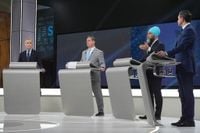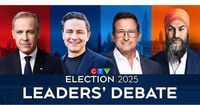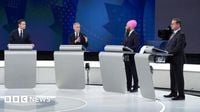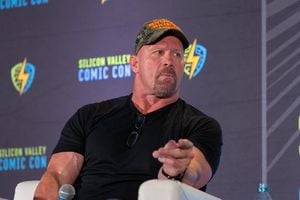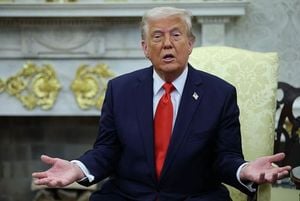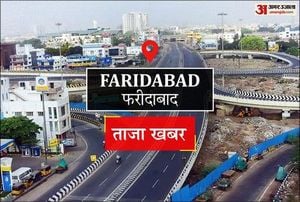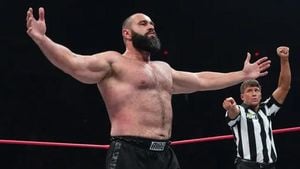In a highly anticipated English-language debate held on April 17, 2025, four federal party leaders faced off in Montreal, tackling critical issues from healthcare to international relations. The debate, moderated by veteran host Steve Paikin, was structured around five main themes: affordability and the cost of living, energy and climate, leading in a crisis, public safety and security, and tariffs and threats to Canada.
During the debate, Bloc Québécois Leader Yves-François Blanchet made headlines with his bold statements regarding international conflicts. He asserted that Canada "must help Ukraine, we must help the civilians of Gaza, and we must destroy Hamas - which is a terrorist organization." This declaration positioned him as a strong advocate for humanitarian efforts, although he clarified he does not aspire to be prime minister, instead seeking to be a responsible partner to the future leader of Canada.
Meanwhile, New Democratic Party (NDP) Leader Jagmeet Singh highlighted the pressing healthcare crisis in Canada, emphasizing the long waiting times for emergencies and seniors. He criticized the trend toward privatization, arguing that it exacerbates the challenges facing the public healthcare system. Singh's remarks came as he faced considerable pressure to regain ground for the NDP, which has seen its support wane in recent polls.
Liberal Leader Mark Carney, participating in his first English-language debate, attempted to distance himself from the legacy of former Prime Minister Justin Trudeau. Conservative Leader Pierre Poilievre, however, repeatedly sought to connect Carney with Trudeau's policies, questioning whether Canadians should trust a candidate who represents "more of the same" after a decade of Liberal governance. Poilievre's strategy aimed to paint Carney as a continuation of past failures, arguing that the country needs a change.
Carney responded assertively, stating, "You spent years running against Justin Trudeau and the carbon tax; they’re both gone," a remark that drew attention for its directness. He also defended his independence, asserting, "I do my own talking points, thank you very much," countering Poilievre's attempts to undermine his credibility.
The debate format, described as a "tag-team match" by political commentator Lawrence Martin, saw leaders frequently interrupting and challenging one another. Singh's aggressive approach was noted, with some commentators suggesting it may have backfired as he struggled to regain support from progressives who have shifted their allegiance to Carney.
Interest in the debate surged online, with Google Trends showing spikes in searches related to the heights of Carney and Poilievre during the event. Carney was noted to be approximately 175 centimeters tall, or five feet nine inches, while Poilievre is estimated to be closer to six feet.
As the debate progressed, the issue of public safety and security emerged as a significant point of contention. Poilievre emphasized the rights of victims, implying that Carney was more concerned with the rights of criminals. Singh, meanwhile, positioned himself as a voice of reason, calling for a balanced approach to issues of crime and safety.
Criticism of the debate's structure also surfaced, particularly regarding the exclusion of the Green Party, which had been disqualified from participation. The Leaders’ Debate Commission faced backlash for this decision, especially in light of the increased visibility and influence of right-wing media outlets such as Rebel News, which dominated post-debate discussions.
In the aftermath of the debate, political analysts expressed mixed opinions on the performances of the leaders. While Carney was seen as a safe pair of hands, Poilievre's aggressive style was noted as potentially alienating to some voters. Singh's performance was deemed less favorable, raising questions about his ability to rally support for the NDP in the remaining days of the campaign.
Polls suggest that the political landscape is increasingly polarized, with the race narrowing down primarily between the Liberals and Conservatives. As the campaign progresses, the leaders will need to articulate clear and compelling visions for Canada to sway undecided voters.
The debate, which drew an audience of millions, served as a critical platform for the leaders to present their policies and engage with one another ahead of the upcoming election. With only a week left in the campaign, the stakes are high, and each party leader must capitalize on their strengths while addressing the pressing concerns of Canadian voters.
As the election approaches, the leaders will continue to navigate a complex political landscape marked by economic uncertainty, healthcare challenges, and international pressures. The outcomes of these debates could very well influence the decisions of voters as they head to the polls.
